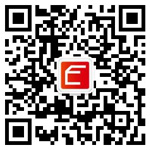
Overview
Product name
Human SQSTM1 (p62) knockout HEK293T cell lineSee all SQSTM1 / p62 lysatesParental Cell Line
HEK293TOrganism
HumanMutation description
Knockout achieved by using CRISPR/Cas9, Homozygous: 1 bp insertion in exon 4Passage number
<>Knockout validation
Sanger Sequencing, Western Blot (WB)Tested applications
Suitable for:WBmore detailsBiosafety level
2General notes
Recommended control: Human wild-type HEK293T cell line (ab255449). Please note a wild-type cell line is not automatically included with a knockout cell line order, if required please add recommended wild-type cell line at no additional cost using the code WILDTYPE-TMTK1.
Cryopreservation cell medium:Cell Freezing Medium-DMSO Serum free media, contains 8.7% DMSO in MEM supplemented with methyl cellulose.
Culture medium:DMEM (High Glucose) + 10% FBS
Initial handling guidelines:Upon arrival, the vial should be stored in liquid nitrogen vapor phase and not at -80ºC. Storage at -80ºC may result in loss of viability.
1. Thaw the vial in 37ºC water bath approximately 1-2 minutes.2. Transfer the cell suspension (0.8 ml) to a 15 ml/50 ml conical sterile polypropylene centrifuge tube containing 8.4 ml pre-warmedculture medium, wash vial with an additional 0.8 mlculture medium(total volume 10 ml) to collect remaining cells, and centrifuge at 201x g(rcf) for 5 minutes at room temperature. 10 ml represents minimum recommended dilution. 20 ml represents maximum recommended dilution.3. Resuspend the cell pellet in 5 ml pre-warmedculture mediumand count using a haemocytometer (Click here to view haemocytometer protocol) or alternative cell counting method. Based on cell count, seed cells in an appropriate cell culture flask at a density of 2x104cells/cm2. This should allow for confluency within 48 hours. Seeding density is given as a guide only and should be scaled to align with individual lab schedules.4. Incubate the culture at 37ºC incubator with 5% CO2. Cultures should be monitored daily.
Subculture guidelines:
- All seeding densities should be based on cell counts gained by established methods.
- A guide seeding density of 2x104cells/cm2is recommended for confluency (80-90% confluence) within 48 hours.
- A partial media change 24 hours prior to subculture may be helpful to encourage growth, if required.
- Cells should be passaged when they have achieved 80-90% confluence.
Click here to view the Mammalian cell tissue culture protocol
This product is subject to limited use licenses from The Broad Institute, ERS Genomics Limited and Sigma-Aldrich Co. LLC, and is developed with patented technology. For full details of the licenses and patents please refer to our limited use license and patent pages.
Properties
Number of cells
1 x 106 cells/vial, 1 mLViability
~90%Adherent /Suspension
AdherentTissue
KidneyCell type
epithelialSTR Analysis
Amelogenin XD5S818: 8, 9D13S317: 12, 14D7S820: 11D16S539: 9, 13vWA: 16, 19TH01: 7, 9.3TPOX: 11CSF1PO: 11, 12Mycoplasma free
YesStorage instructions
Shipped on Dry Ice. Store in liquid nitrogen.Storage buffer
Constituents: 8.7% DMSO, 2% Cellulose, methyl etherPurity
Immunogen affinity purifiedResearch areas
- Signal Transduction
- Signaling Pathway
- Nuclear Signaling
- NFkB Pathway
- Signal Transduction
- Protein Trafficking
- Vesicle Transport
- Regulation
- Epigenetics and Nuclear Signaling
- Transcription
- Polymerase associated factors
- Pol II Transcription
- Other
- Cardiovascular
- Heart
- Autophagy
- Autophagosome
- Metabolism
- Pathways and Processes
- Metabolism processes
- Autophagy and mitophagy
- Autophagosome
- Cancer
- Cell Death
- Autophagy
- Autophagosome
Target
Function
Adapter protein which binds ubiquitin and may regulate the activation of NFKB1 by TNF-alpha, nerve growth factor (NGF) and interleukin-1. May play a role in titin/TTN downstream signaling in muscle cells. May regulate signaling cascades through ubiquitination. Adapter that mediates the interaction between TRAF6 and CYLD (By similarity). May be involved in cell differentiation, apoptosis, immune response and regulation of K(+) channels.Tissue specificity
Ubiquitously expressed.Involvement in disease
Defects in SQSTM1 are a cause of Paget disease of bone (PDB) [MIM:602080]. PDB is a metabolic bone disease affecting the axial skeleton and characterized by focal areas of increased and disorganized bone turn-over due to activated osteoclasts. Manifestations of the disease include bone pain, deformity, pathological fractures, deafness, neurological complications and increased risk of osteosarcoma. PDB is a chronic disease affecting 2 to 3% of the population above the age of 40 years.Sequence similarities
Contains 1 OPR domain.Contains 1 UBA domain.Contains 1 ZZ-type zinc finger.Domain
The UBA domain binds specifically "Lys-63"-linked polyubiquitin chains of polyubiquitinated substrates. Mediates the interaction with TRIM55.The OPR domain mediates homooligomerization and interactions with PRKCZ, PRKCI, MAP2K5 and NBR1.The ZZ-type zinc finger mediates the interaction with RIPK1.Post-translationalmodifications
Phosphorylated. May be phosphorylated by PRKCZ (By similarity). Phosphorylated in vitro by TTN.Cellular localization
Cytoplasm. Late endosome. Nucleus. Sarcomere (By similarity). In cardiac muscles localizes to the sarcomeric band (By similarity). Localizes to late endosomes. May also localize to the nucleus. Accumulates in neurofibrillary tangles and in Lewy bodies of neurons from individuals with Alzheimer and Parkinson disease respectively. Enriched in Rosenthal fibers of pilocytic astrocytoma. In liver cells, accumulates in Mallory bodies associated with alcoholic hepatitis, Wilson disease, indian childhood cirrhosis and in hyaline bodies associated with hepatocellular carcinoma.- Information by UniProt



